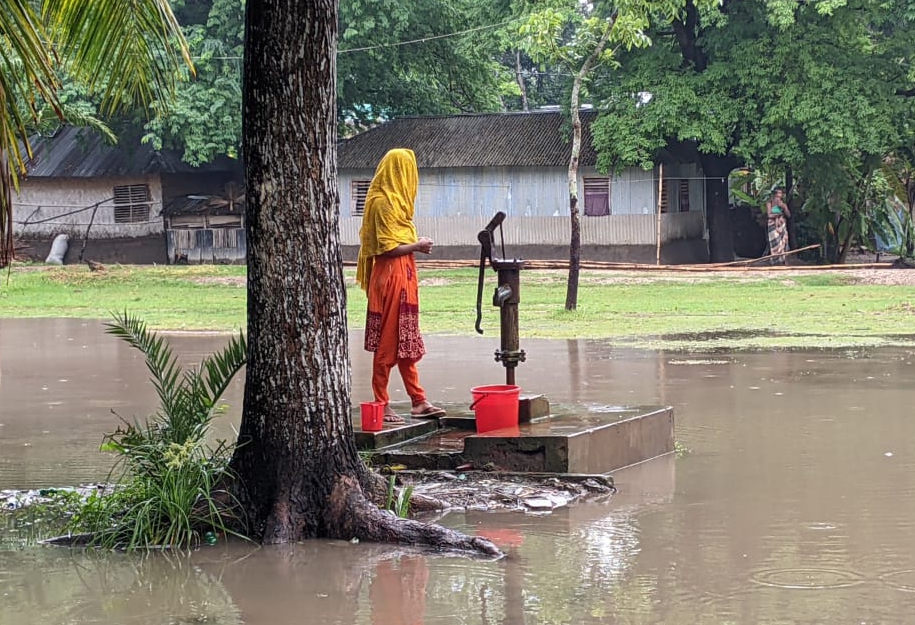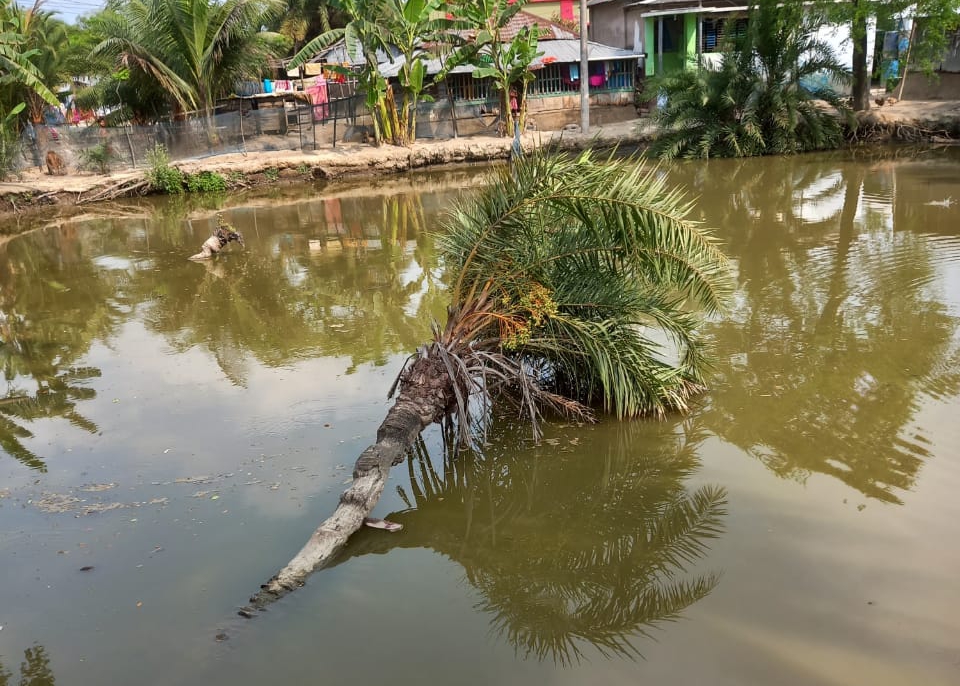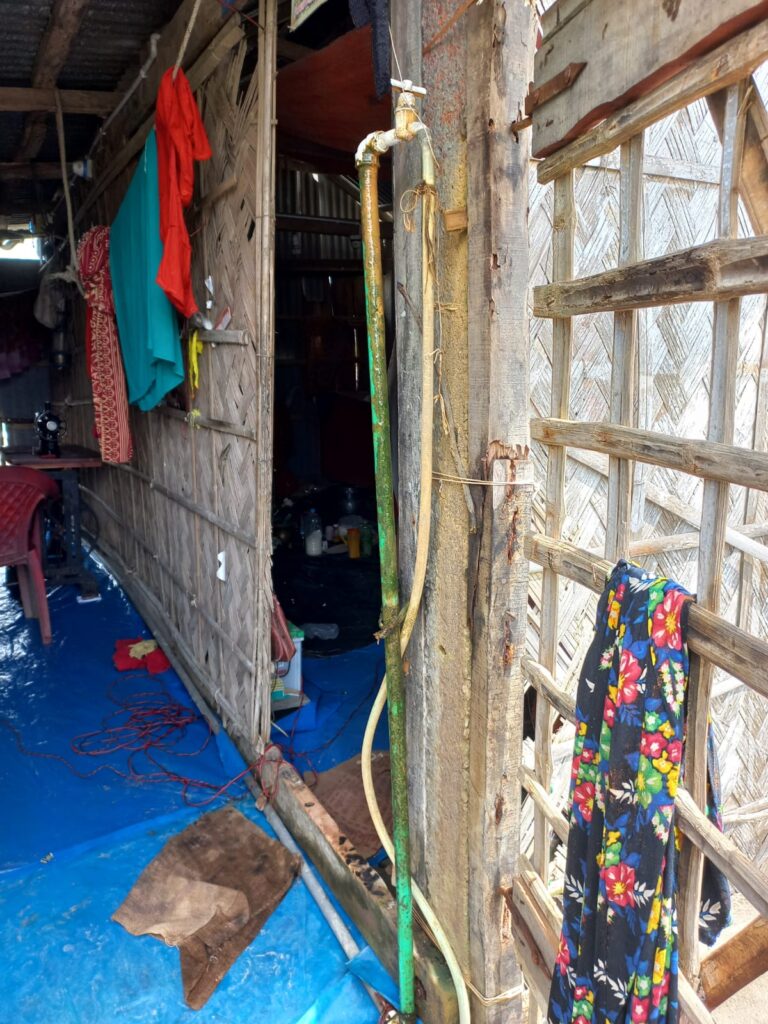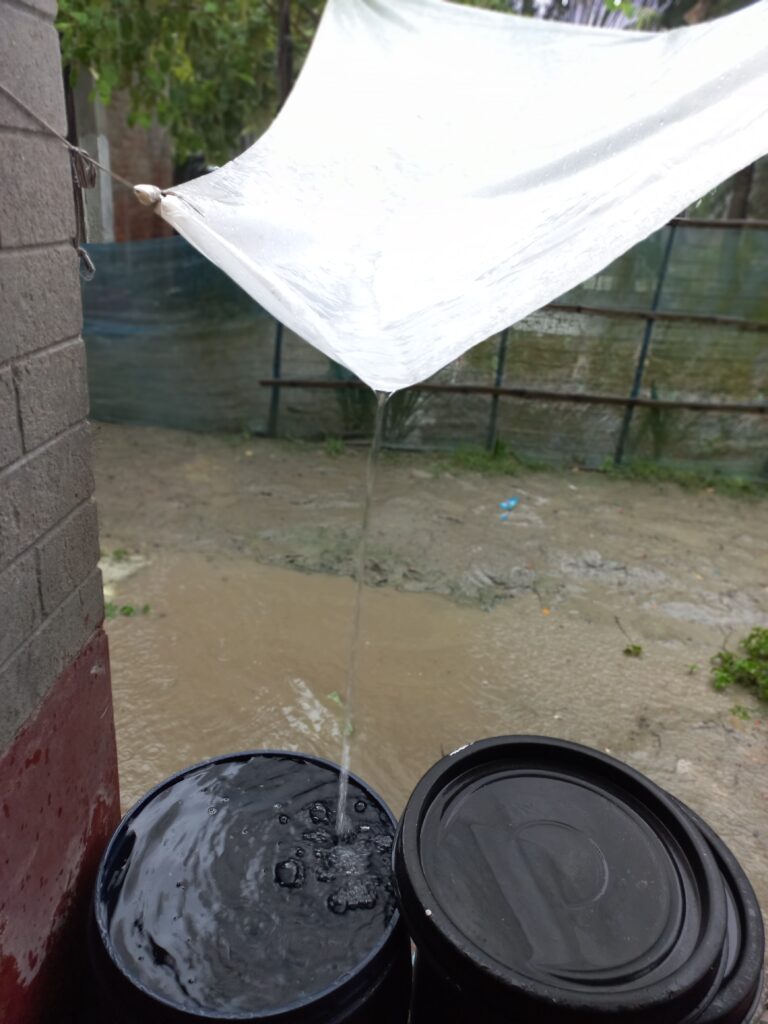by Afsana Afrin Esha, REACH Research Associate and PhD student at Durham University
Every year, the southwestern coastal zone of Bangladesh faces weather-related disasters, worsening a perpetual drinking water crisis. Cyclone Sidr in 2007 and Cyclone Aila in 2009 caused widespread destruction. While people were still recovering, Cyclone Amphan caused heavy damage to infrastructure and contamination. Saltwater intrusion due to cyclones and storm surges is having devastating consequences on groundwater and freshwater resources. Different water treatment options and alternative strategies are being applied by the local government institutions, NGOs and aid agencies, whilst informal or small water service providers too, are on the rise, addressing critical gaps in public investments in the rural water sector. However, in the face of rising climatic changes along with other socio-political factors, water shortages persist. In this short piece, I portray the effects of disaster on drinking water sources to understand the nuances of climate resilience.
Where?
We have been working to understand disaster impacts on drinking water access in the villages of Gabura, Pratabnagar, Bajua, Munshiganj, Uttar Bedkashi and Burigoalini in the coastal districts of Khulna and Shatkira, southeast Bangladesh. The study locations were selected based on the following criteria – severity of drinking water crisis, availability of drinking water technologies, and geographic vulnerability to disasters. All five areas are extremely vulnerable to climate change, coastal disasters, and sea level rise. Gabura in particular is isolated from the mainland, with poor road network, and is highly vulnerable to cyclonic storm surges and flooding hazards. Most of the unions are adjacent to tidal rivers while Munshiganj is located at the edge of the mainland. Pratabnagar with deep tube wells (DTW) as the dominant technology was inundated for 23 months after Cyclone Amphan in 2020. Uttar Bedkashi had a similar fate in some areas and is highly vulnerable to embankment failure, river erosion and cyclonic damage.
Deep Tube Well (DTW) – the challenges of saltwater inundation and repair
Drawing from deep aquifers of the southwest coastal region, tube wells have been a successful drinking water supply source. However, deep fresh coastal groundwater is increasingly vulnerable to vertical infiltration by saltwater due to climatic and socio-political influences. When disaster hit the coast accompanied by high-speed winds and waves, DTWs can be damaged and are often inundated. In Pratabnagar only two to three high rise tube wells remained functional during cyclone Amphan in 2020. Road inundation along with saltwater infiltration tube wells, required flushing of these technologies. Mobilisation for repairs within the inundated areas became a very big issue amidst the crisis. Residents complained about technicians demanding $125 for fixing one tube well, with further reluctance to respond unless multiple wells required fixing at once. Thus, community members had to wait for many days for their only drinking water source to be fixed and had to survive on water provided through relief. Relief also does not come easily, unless situations are severe. Struggles during annual floods are often not seen as a serious issue and many people are compelled to drink often polluted, highly saline water from ponds and rivers.

Ponds and Pond Sand Filter (PSF) – vulnerable to destruction
PSF is a cheap, popular and well accepted technology in Bangladesh. Although the use of PSF ensures better quality of water and increases access to water, they are dependent on pond or rainwater resources, require constant maintenance and cleaning, and have long waiting times. In the face of disaster, ponds are very easily destroyed, and may need a long recovery time depending on season. Initially installed by local NGOs, they become the responsibility of residents. People in one village were weary of constantly repairing their PSF. Hundreds of people from three nearby wards take water from the same pond. Even after slight rainfall, debris washes off into the uncovered pond situated beside the road. The keeping of animals such as ducks, goats and cows nearby adds to the problem, as do some breaches by local people using the pond for washing or bathing. The person responsible expressed their growing frustration, as they had to fix the PSF three times just that month. Pipes and taps are often found broken after heavy storms – these are easy to fix, but this requires effort, time and money.
Reverse Osmosis (RO) – high cost and intermittent electricity supply
RO is considered to be a technology that can purify any input water irrespective of salinity and other contaminants, but that is not entirely true. Prolonged operation time is heavily dependent on the source water quality. For example, a private RO plant ceased operation after 18 months due to maintenance issues, which the operator ascribed to the highly saline source water. The operator complained that fixing the RO is very expensive and involves bringing parts from Khulna city. Financial arrangements to cover maintenance costs were not in place. Another RO operator narrates his difficulties with cut-off electric supply during cyclone Amphan. The plant was shut and even when electricity was restored, he could not deliver water as he usually did by van, as most roads were inundated. He later sold the water to NGOs but faced huge losses during that time.
Piped Water System (PWS) – often damaged
PWS, usually connected to groundwater sources, are often the preferred drinking water source, but they are highly prone to disaster impacts. Water pipes are often broken due to impacts of cyclones and storm surges leading to contamination. There are also complaints of water containing dirt which may be due to silt entering the pipes, or iron contamination. Users have to throw away buckets of water before usable water comes which adds a burden on their bills. When repair is required, the community members try to reach out to the service providers, but they are very irregular and often do not respond to phone calls.
Rainwater Harvesting (RWH) and Rainwater Harvesting System (RWHS)
During the monsoon season, a prevalent practice involves utilizing rainwater harvesting techniques as a means for securing water needs. In large rainwater harvesting systems, the storage pots – large plastic or cement tanks or holdings are usually resilient to weather impacts. However, associated pipes are easily damaged by high winds and rain. During our field research, most of the RWHS we came across were non-functional due to high repair costs and the lack of expertise. Households practice small-scale rainwater harvesting using clay pots, and buckets. These help with water access during crisis, but the collected water is often contaminated and requires additional treatment for disinfection.
Conclusion
People, communities, organisations and the state, individually and collectively govern these technologies. Despite advances in the infrastructure, the alarming reality of the drinking water crisis persists, underscoring the urgent need for comprehensive solutions. Challenges with operation and maintenance, institutional coordination, improper planning, and community agency affect technology resiliency. We need to look at strategies to make these technologies more disaster-resilient at all stages – planning, implementation, usage and maintenance. One such strategy is employing spatial modelling software, aiding in pre-implementation decisions like understanding hydrogeologic constraints and post-implementation tasks such as categorizing infrastructure attributes for informed maintenance and investment decisions. Trust, collective action, public awareness and knowledge must be nurtured within communities and also at the broader scale for the functioning and recovery of these technologies. We cannot entirely foresee natural catastrophes and their severity on the coast – all we can do is aim for our closest understanding with the help of local knowledge and to be prepared for them.
It’s crucial to underscore the significance of socio-political factors, signaling a need for more comprehensive acknowledgment and examination of these in the context of climate resilience. In this vein, I will be further delving into these issues for my PhD research at the Institute of Hazard, Risk and Resilience, Department of Geography in Durham University.
View Esha’s 2023 REACH Conference poster.



